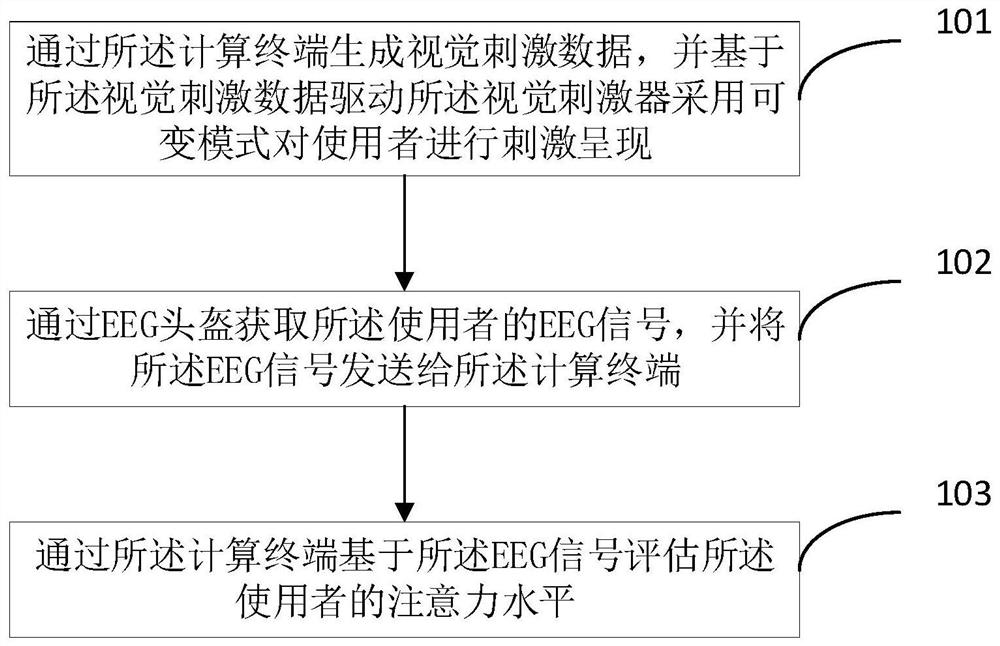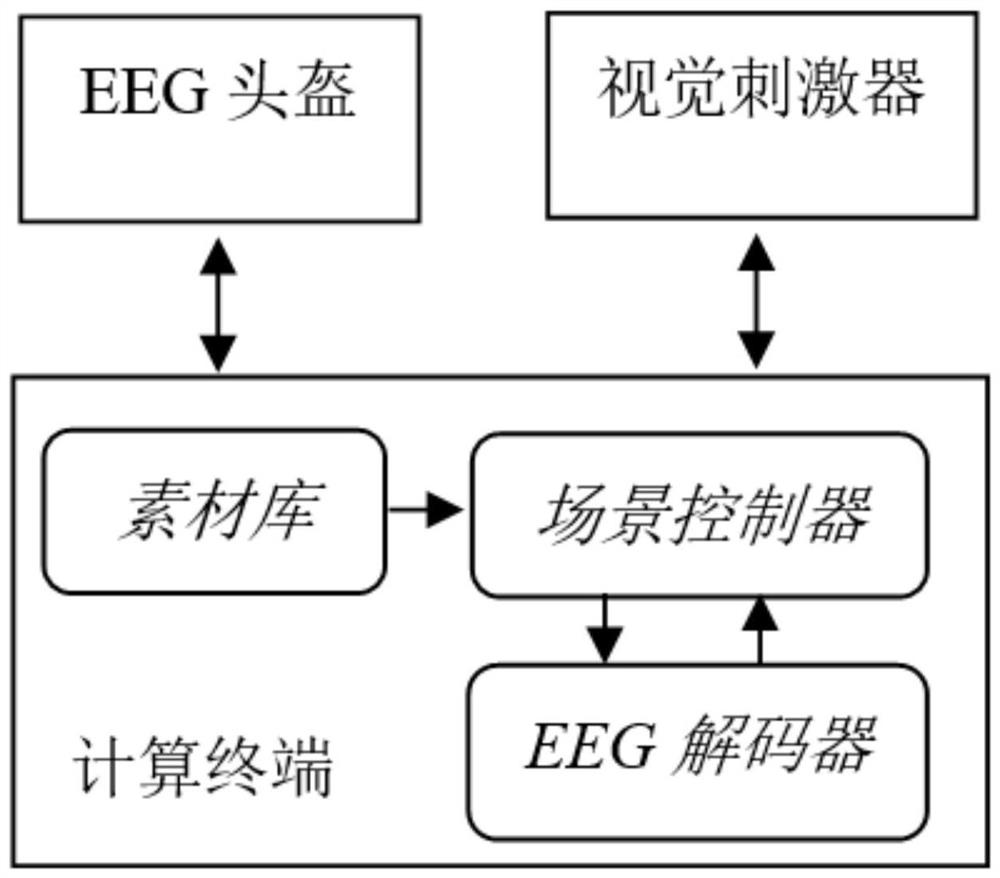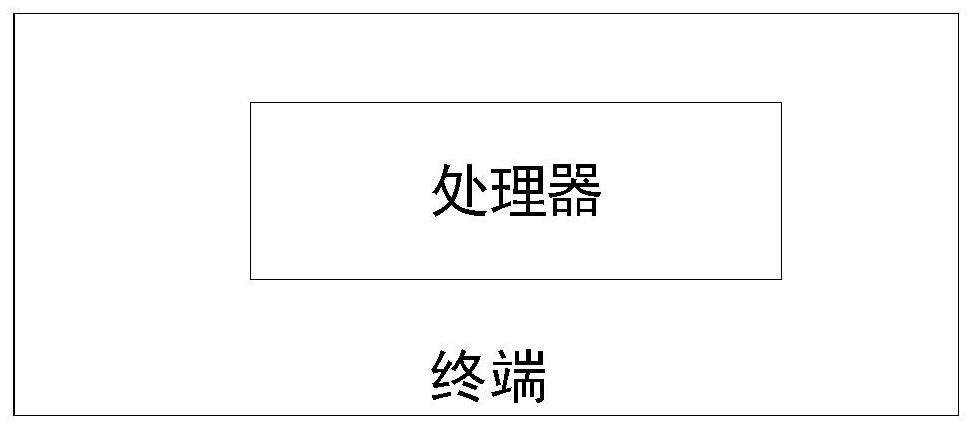Attention training method and terminal
A training method and attention technology, applied in the field of attention training, can solve problems such as low attention level, inability to achieve the purpose of attention training, and poor interactive experience.
- Summary
- Abstract
- Description
- Claims
- Application Information
AI Technical Summary
Problems solved by technology
Method used
Image
Examples
Embodiment 1
[0067] Embodiment 1 of the present invention discloses a method for training attention, which is applied to a system including an EEG helmet, a visual stimulator, and a computing terminal, wherein the computing terminal is connected to the EEG helmet and the visual stimulator respectively, such as figure 1 As shown, the method includes the following steps:
[0068] Step 101, generate visual stimulation data through the computing terminal, and drive the visual stimulator to present stimulation to the user in a variable mode based on the visual stimulation data;
[0069] Step 102, acquire the EEG (Electroencephalogram, brain wave) signal of the user through the EEG helmet, and send the EEG signal to the computing terminal;
[0070] Step 103, using the computing terminal to evaluate the attention level of the user based on the EEG signal.
[0071] Specifically, in step 103, the target that the user pays attention to at different time points is determined based on the EEG signal,...
Embodiment 2
[0092] Embodiment 2 of the present invention also discloses a method for training attention. On the basis of Embodiment 1, the EEG helmet also includes FPz signal electrodes, and the positions of the FPz signal electrodes on the EEG helmet correspond to the user forehead. Therefore, the electrodes in the EEG helmet may include but not limited to 4 basic signal electrodes and 1 ground electrode. The four basic signal electrodes are placed on the forehead, the top of the head, and one on the left and right occipital-temporal regions, respectively corresponding to the four positions of FPz, Cz, PO7, and PO8 in the 10-20EEG international system. One ground electrode is placed in the middle of FPz and Cz. The electrodes at FPz are mainly used to record theta waves and beta waves for the evaluation of attention level based on EEG rhythm in this protocol; the three electrodes Cz, PO7, and PO8 are used for brain-computer interface decoding. In the case of poor use status or high env...
Embodiment 3
[0096] Embodiment 3 of the present invention also discloses an attention training method. On the basis of Embodiment 1 and Embodiment 2, it is further disclosed that the computing terminal includes an EEG decoder; the EEG decoder is based on the Trained from visual stimulus data;
[0097] The "evaluating the user's attention level by the computing terminal based on the EEG signal" in step 103 includes: decoding the EEG signal by the EEG decoder to obtain a decoding result; based on the The decoding result is used to evaluate the attention level of the user.
[0098] Further, the decoding result is the score output by the EEG decoder; the "evaluating the user's attention level based on the decoding result" includes: determining the decoding probability based on the score, wherein, The higher the score, the greater the corresponding decoding probability; convert the decoding probability into the concentration value of the visual stimulation data at the lowest level of difficult...
PUM
 Login to View More
Login to View More Abstract
Description
Claims
Application Information
 Login to View More
Login to View More - R&D
- Intellectual Property
- Life Sciences
- Materials
- Tech Scout
- Unparalleled Data Quality
- Higher Quality Content
- 60% Fewer Hallucinations
Browse by: Latest US Patents, China's latest patents, Technical Efficacy Thesaurus, Application Domain, Technology Topic, Popular Technical Reports.
© 2025 PatSnap. All rights reserved.Legal|Privacy policy|Modern Slavery Act Transparency Statement|Sitemap|About US| Contact US: help@patsnap.com



